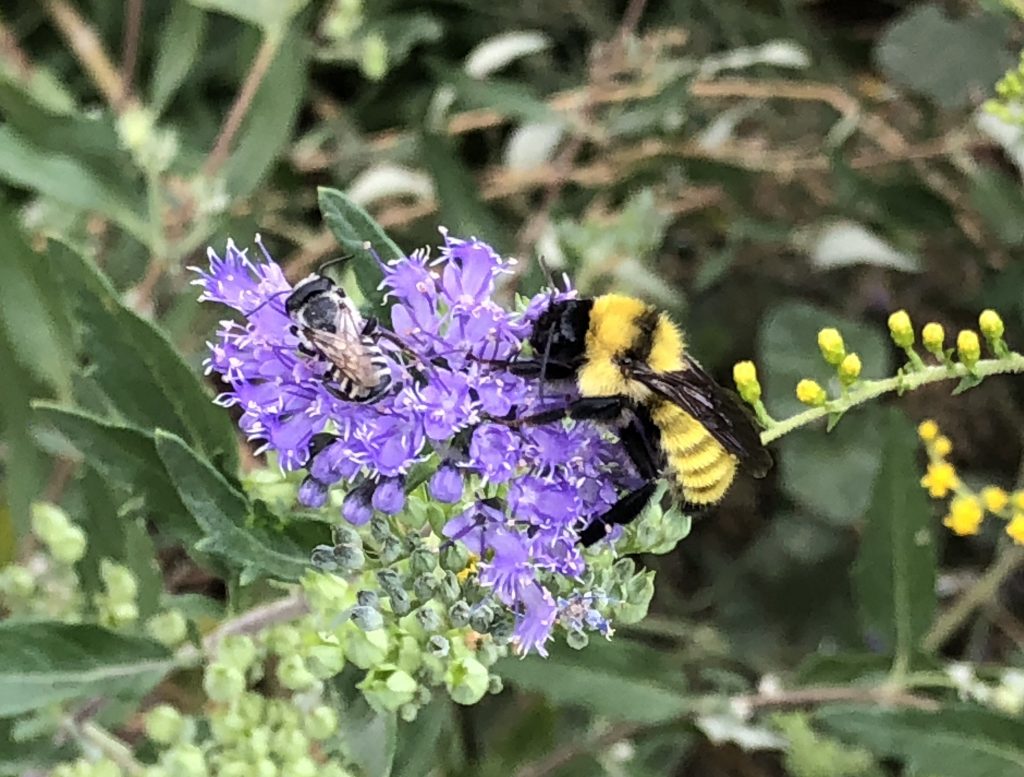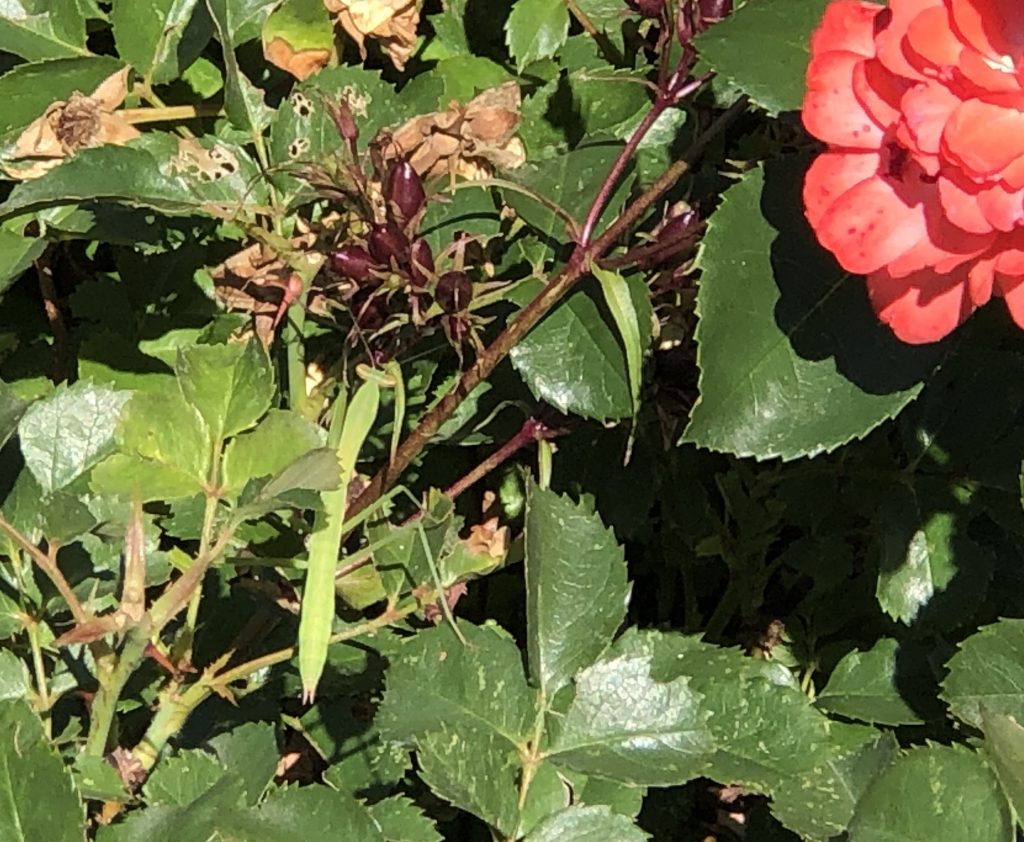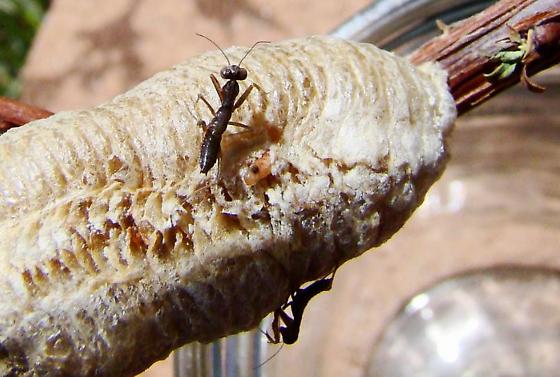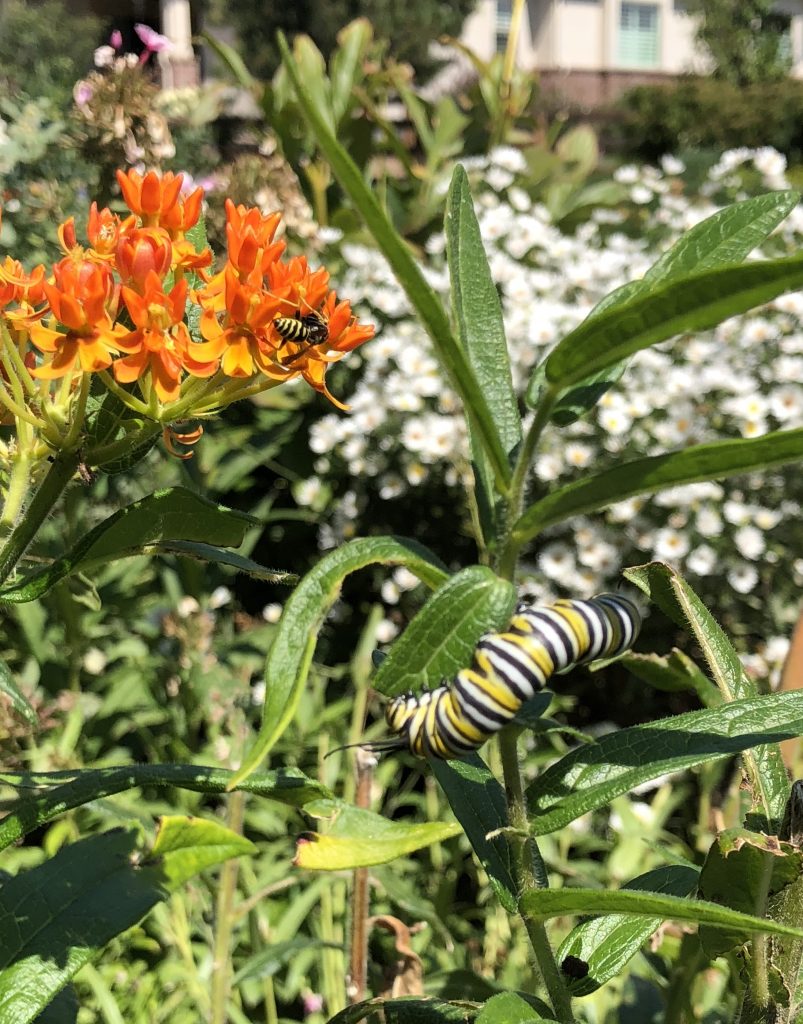Garden and Home Show CSU Extension Garden: Heroes and Villains in the Garden
- 2020-01-07
- By danibash
- Posted in The Garden Buzz
By Megan Knight, Colorado Master Gardener
Something to look forward to this winter is the annual Garden and Home Show, a showcase of garden and home improvement inspiration. The theme for this year’s CSU Extension Garden is ‘Heroes and Villains in the Garden: Insects and their Plant Hosts.’ The goal is to educate show visitors about how to create and manage home gardens where heroes thrive, and villains aren’t tempted to stay.


Heroes
Colorado is home to several heroic pollinators and other beneficial insects such as bees, butterflies, lady beetles and praying mantids.
Many are familiar with the European honey bee, but how many are aware there are over 940 bee species in Colorado? It is estimated that pollinators are responsible for over 35% of the world’s food crops. Creating a habitat where bees thrive is essential. Several species of butterflies grace our Colorado gardens. Butterflies like sun, open spaces, wind protection and sometimes specific host plants for caterpillars. A black-spotted red lady beetle is easily recognizable. However, the orange and black alligator-like larvae that annihilate aphids and other soft-bodied pests can be unrecognizable and appear intimidating in the garden. The more elusive praying mantis is also a voracious eater of insects, some of which are garden pests. The life cycle of the mantis is just one year. The mantis leaves behind an egg case, a distinctively shaped mass containing several dozen eggs that hatch in the garden in the spring. These beneficial insects all have favorite plant hosts and non-plant attractors. When planning a garden to woo them, the food and shelter they prefer for both the adult and immature stages of life should be considered. Bee houses, watering dishes, bare ground habitat for nesting solitary bees, and shallow mud baths for butterflies are excellent additions to the garden landscape.


Villains
Initially detected in Boulder County in 2013, the Emerald Ash Borer (EAB) has moved into adjacent Colorado counties and is expected to continue to migrate. The EAB is a highly invasive, non-native insect villain whose larvae tunnel under the bark of true ash trees, cutting off the flow of water and nutrients. If left untreated, EAB damage will lead to tree death. An ash tree may receive life-long, professionally-applied insecticide treatments or may be replaced with a non-ash alternative.
A more visible villain on the South Metro Front Range is the Japanese Beetle. This non-native insect pest devours garden favorites such as roses and grapes, leaving behind lacy foliage. With no natural predators, the gardener’s best defense may be choosing plants the beetles tend to dislike. When managing these villains, it’s important to remember that they share the same space as our heroes.
Horticulture Resources
- Garden Buzz Archives
- CSU Extension Resources
- Colorado Master Gardener Program
- Foothills to Plains Native Plant Master Program
- Native Bee Watch Community Science Program
- The Co-Hort Blog
- PlantTalk Colorado
- Soil Testing
- Plant Select
- Emerald Ash Borer
- Japanese Beetle
- Colorado State Forest Service
- Ask an Expert


